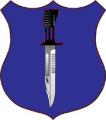I like playing with MTOEs a bit, seeing how much more effectiveness I could generate (suitable for full-spectrum operations, sustainable in combat, etc) if I was in charge of the military for a day.
An Army mech platoon is often 40 or more men:
12 men to man the Bradleys
3x 9-man squads
PL, RTO, Medic
Theoretically, you can't fit that many dismounts in the back of the Bradley, but the 2 platoons I worked with in Iraq always had room for "1 more". Especially after a mission.

And this was definitely a result of higher (division) really getting the platoons up to full strength (and even beyond) which caused one platoon sergeant to comment that he had never been in a full platoon before.
A typical Marine platoon would probably have similar numbers, although with much larger squads.
I am more inclined to go with Wilf's idea of multiple fire teams but I would like to align them in 2 sections. However, my platoon is 45 men, including the HQ element. I have 2 20-man sections, with 3 6-man squads/fire teams in each section and a small section HQ. Is 40+ men really too big for a platoon?
Tankersteve





 And this was definitely a result of higher (division) really getting the platoons up to full strength (and even beyond) which caused one platoon sergeant to comment that he had never been in a full platoon before.
And this was definitely a result of higher (division) really getting the platoons up to full strength (and even beyond) which caused one platoon sergeant to comment that he had never been in a full platoon before.






Bookmarks